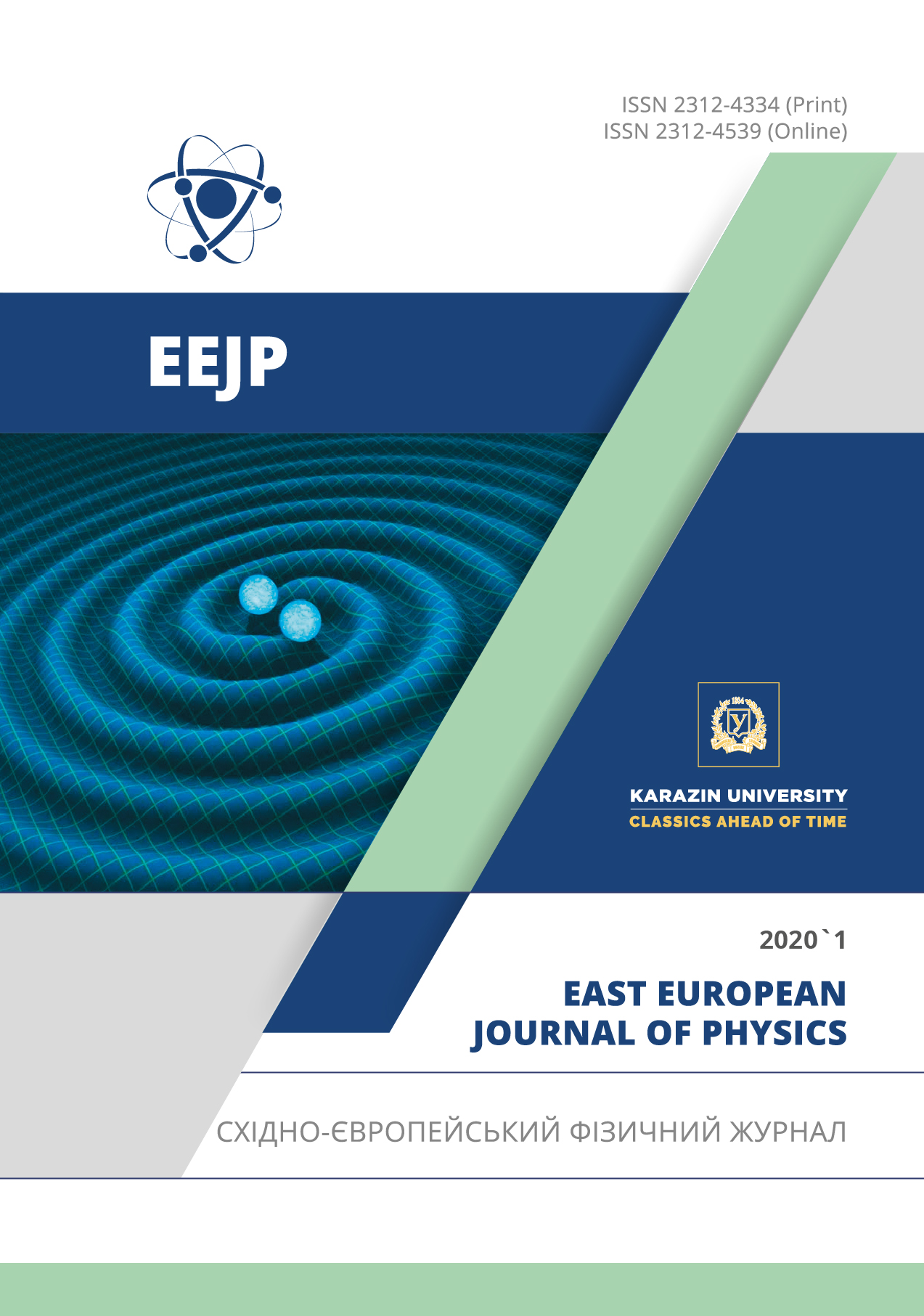Macroparticle Reflection from a Biased Substrtate in Plasma Ion Implantation Systems
Abstract
Generation of metal plasma in vacuum arc discharge is always accompanied by a production of macroparticles (MPs). The MP contamination in coatings is the most important technological problem in plasma immersion ion implantation (PIII). For the case of PIII with long pulse duration, the results of theoretical study of MP charging and dynamics in the plasma sheath are presented. To describe the MP charging in the sheath the sheath model is combined with orbital motion limited (OML) theory. The MP charging in the sheath is studied with taking into account emission processes from MP surface as well as kinetic electron emission (KEE) from the high voltage substrate. The charge and dynamics of MP are governed by local parameters of counter fluxes of ions and secondary electrons from the substrate. The MP charge depends on the MP local position within the sheath. The dominant role in MP charging is shown to be played by KEE from the substrate, which is an important feature of PIII. KEE from the substrate changes the potential profile within the sheath, the sheath thickness, and current balance on MP surface. MP charge is obtained to be negative because it is caused by higher current density of secondary electrons from the substrate than that of ions. The latter is possible for KEE yield larger than a unit. The substrate biasing influences both the release of secondary electrons from the substrate under ion impact and their acceleration in the sheath. The increasing of negative substrate bias is demonstrated to result in the increasing of absolute value of negative MP charge, and, thereby, the increasing of electrostatic reflection of MP from the substrate. The negative substrate biasing is shown to be the effective alternative method to reduce MP contaminations in coatings without applying any magnetic filters.
Downloads
References
R.L. Boxman, P.I. Martin and D.M. Sanders, editors, Handbook of vacuum arcs science and technology: fundamentals and applications (Noyes Publications, New Jersey, 1995), pp. 737.
A. Anders, editor, Handbook of plasma immersion ion implantation and deposition (John Wiley & Sons, New York, 2000), pp. 736.
I.I. Beilis, IEEE Trans. Plasma Sci. 29(5), 657-670 (2001), https://doi.org/10.1109/27.964451.
G.Yu. Yushkov, A.Anders, E.M. Oks and I.G. Brown, J. Appl. Phys. 88(10), 5618-5622 (2000), https://doi.org/10.1063/1.1321789.
E.M. Oks, IEEE Trans. Plasma Sci. 30(1), P. 202-207 (2002), https://doi.org/10.1109/TPS.2002.1003861.
R.L. Boxman and S. Goldsmith, Surf. Coat. Technol. 52, 39-50 (1992), https://doi.org/10.1016/0257-8972(92)90369-L.
C.N. Tai, E.S. Koh and K. Akari, Surf. Coat. Technol. 43/44, 324-335 (1990), https://doi.org/10.1016/0257-8972(90)90085-Q.
A.A. Bizyukov, I.O. Girka and E.V. Romashchenko, IEEE Trans. Plasma Sci. 44(7), 1050-1056 (2016), https://doi.org/10.1109/TPS.2016.2573284.
A. Anders, Cathodic arcs: from fractal spots to energetic condensation, (Springer, New York, 2008), pp. 540.
M.A. Lieberman, J. Appl. Phys. 66(7), 2926-2929 (1989), https://doi.org/10.1063/1.344172.
S. Qin, C. Chan and Z. Jin, J. Appl. Phys. 79(7), 3432-3437 (1996), https://doi.org/10.1063/1.360640.
M.A. Lieberman and A.J. Lichtenberg, Principles of plasma discharge and material processing, (John Wiley&Sons, New York, 2000), pp. 299.
A. Anders, Surf. Coat. Technol. 136(1-3), 85-92 (2001), https://doi.org/10.1016/S0257-8972(00)01017-3.
I.G. Brown, O.R. Monteiro and M.M.M. Bilek, Appl. Phys. Lett. 74(17), 2426-2428 (1999), https://doi.org/10.1063/1.123869.
I. Langmuir, in: Collected Works of Irving Langmuir, edited by G. Suits (Pergamon, New York, 1961).
E.J. Sternglass, The theory of secondary electron emission, (Westinghouse Res. Lab. Sci. Pap,Pittsburgh, 1954).
Authors who publish with this journal agree to the following terms:
- Authors retain copyright and grant the journal right of first publication with the work simultaneously licensed under a Creative Commons Attribution License that allows others to share the work with an acknowledgment of the work's authorship and initial publication in this journal.
- Authors are able to enter into separate, additional contractual arrangements for the non-exclusive distribution of the journal's published version of the work (e.g., post it to an institutional repository or publish it in a book), with an acknowledgment of its initial publication in this journal.
- Authors are permitted and encouraged to post their work online (e.g., in institutional repositories or on their website) prior to and during the submission process, as it can lead to productive exchanges, as well as earlier and greater citation of published work (See The Effect of Open Access).








